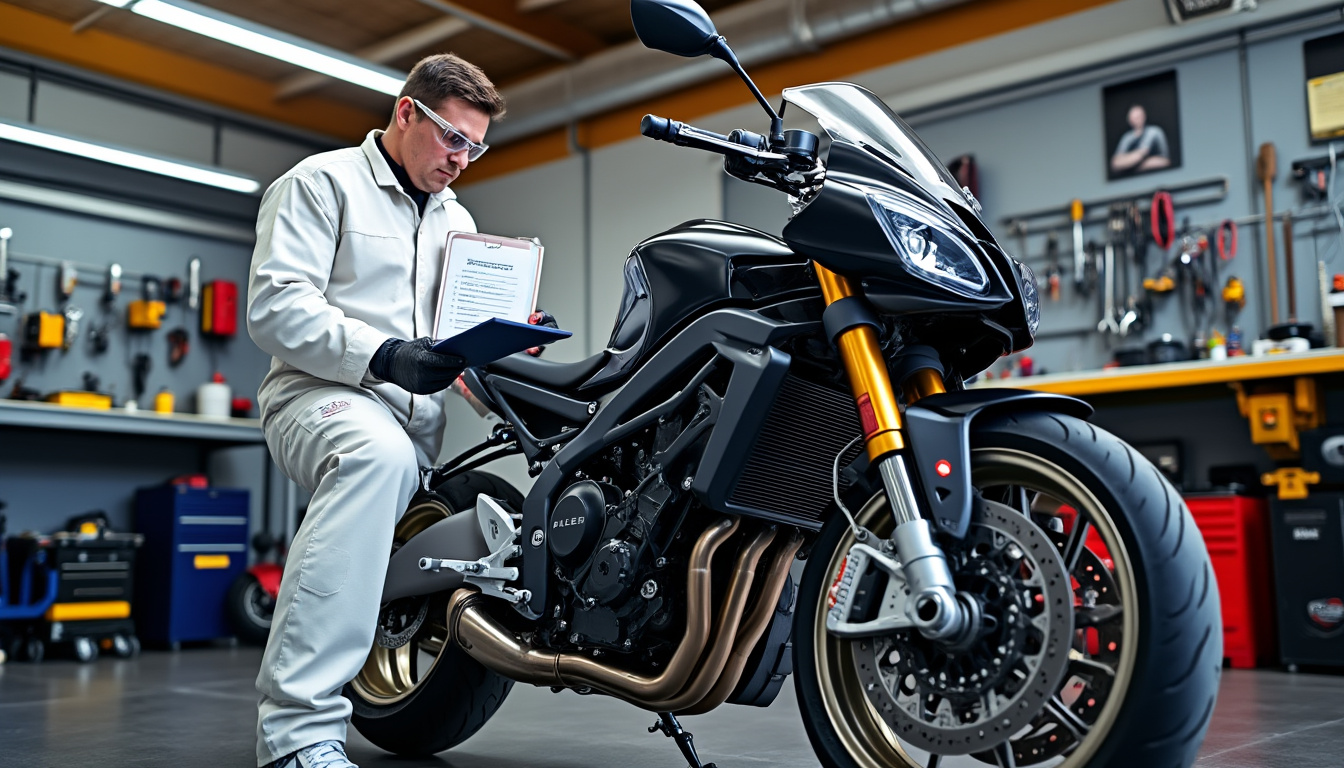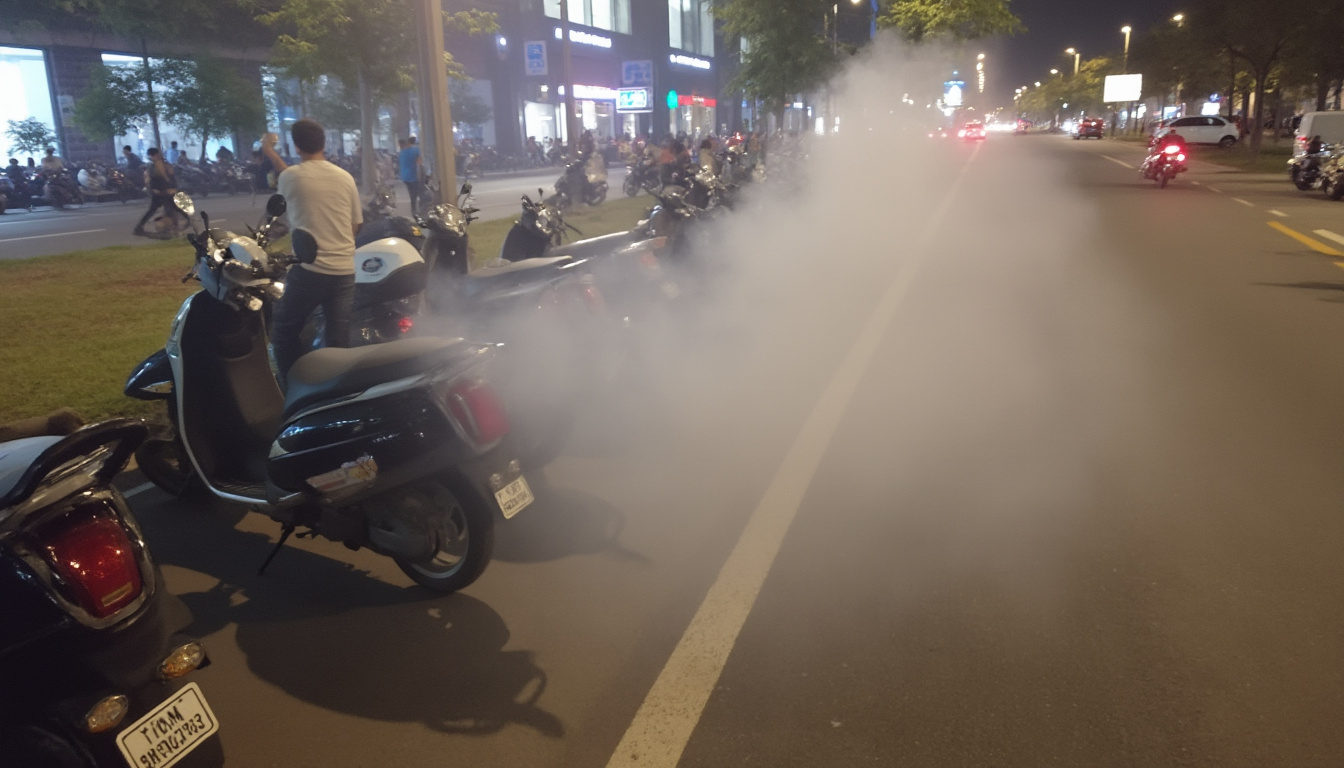Concerning legislation for motorcyclists and two-wheeled vehicle enthusiasts

Motorcyclists are often at the center of a heated debate regarding new regulations that affect their vehicles, two-wheelers. In 2025, several legislations mark a turning point in their daily lives. This context, where road safety and the fight against noise pollution are intensifying, disrupts the habits of enthusiasts. This article will explore the new directives that will change the way two-wheelers are perceived and regulated in France.
Technical inspection of two-wheelers: a new era for motorcyclists
Starting in 2025, technical inspection will become mandatory for motorcycles and scooters over seven years old. This change has been implemented to enhance safety on the roads and ensure that vehicles comply with noise and pollution standards. Motorcyclists must now adapt to this new legislation, which could alter their perception of two-wheeled vehicles.

The modalities of the technical inspection
The technical inspection of two-wheelers includes various tests to check the proper functioning of safety systems, such as brakes, lights, and tire conditions. A table below summarizes the key points that will be examined:
| Checked elements | Description |
|---|---|
| Brakes | Assessment of the effectiveness of the front and rear braking system. |
| Lighting | Verification of the proper functioning of headlights, turn signals, and brake lights. |
| Tires | Examination of tire wear and pressure. |
| Exhaust | Control of noise levels and pollutant emissions. |
Once the technical inspection is completed, motorcyclists will receive a certificate of conformity. For those who do not comply with this regulation, fines will be imposed, and it will not be possible to circulate without this document. This requirement raises many questions among enthusiasts regarding the economic impact it may have.
The financial implications for motorcyclists
The cost of the technical inspection may vary depending on the service providers, which could represent a significant amount for two-wheeled vehicle owners. Analyzing potential expenses becomes crucial. Various factors influence these costs:
- Initial cost of the technical visit
- Possible need for repairs before validation
- Frequency of inspections: every two years
Therefore, enthusiasts of prestigious brands such as Ducati, Harley-Davidson, or Kawasaki must ensure that their motorcycles remain compliant to protect their investment.
A stricter crackdown on noise pollution
With the new regulations, the UN has proposed provisions aimed at further limiting noise pollution. Removable muffler devices, often used by some motorcyclists to increase the noise from their exhausts, will now be prohibited. This desire to unify exhaust systems emerges from a growing concern for acoustic pollution in our modern societies. Authorities seek to align two-wheelers with strict standards, similar to those already applied to four-wheeled vehicles.

Context and regulations
Regulation EC 92.03 establishes that replacement mufflers must not allow the removal of baffles or parts that reduce noise. Depending on the manufacturers, many models of mufflers such as those produced by BMW Motorrad or Yamaha will need to rethink their approach to comply with requirements. Here is what the new regulation foresees:
- Prohibition of removable "aftermarket" mufflers
- Regular compliance checks to ensure adherence to noise levels
- Declaration of conformity for every new model on the market
This will inevitably lead to changes in the industry, especially concerning exhaust models. Brands such as Honda or Suzuki will need to invest in silent technologies without compromising performance.
Innovative technologies serving legislation
Technological advancements could also play a crucial role in meeting these new standards. Indeed, manufacturers will explore new avenues to design more efficient exhaust systems while respecting noise regulations. To do this, several strategies could be implemented:
- Development of new sound-absorbing materials
- Integration of acoustic control software
- Collaboration with researchers to improve the internal design of exhausts
These innovations could allow motorcyclists to continue enjoying the performance and authenticity of their machines while respecting increasing environmental constraints.
Lane splitting: a new unprecedented offense
Starting in 2025, lane splitting, which was practiced by motorcyclists as a way to save time in traffic jams, will become illegal. This decision aims to improve road safety while reducing stress for drivers. The consequences for two-wheeled vehicle operators will be severe.

Sanctions and implications
The new regulation states that a violation of the highway code for lane splitting will result in a fine of 135 euros and a loss of three points on the driving license. This innovation has sparked various reactions within the motorcycling community. Studies show that two-wheelers are often perceived as dangers on the road, which motivates the legislation.
Debates center around essential questions: will this measure really improve safety? Could the increased risk of collisions between vehicles justify a total ban on motorcycles in traffic jams? It seems essential to explore these questions in depth to understand the implications of this decision.
Concerns from the motorcycling community
Many enthusiasts are questioning the reasons behind this decision. Feedback shows that lane splitting can sometimes prevent accidents by promoting better traffic flow. A list of arguments can contribute to enriching the debate:
- Reduction of accidents in traffic jams
- Decrease in travel times for everyone
- Possibility of better sharing of the road among users
However, a balance must be struck to ensure both the safety of motorcycle users and that of other road users. It is imperative that future legislations take this perspective into account.
The challenges ahead for electric motorcycles
The new legislation highlights another aspect that is less often discussed: electric motorcycles. While sales of traditional motorcycles are stagnating, those of electric models, such as those offered by Triumph and Moto Guzzi, are increasing day by day. However, these vehicles are also subject to the same strict noise and pollution regulations. Just like thermal machines, electric motorcycles must ensure they meet the same requirements in terms of noise standards and safety.
A rapidly evolving market
The electric motorcycle market has the potential to evolve rapidly in the coming years. Brands that invest in this technology will gain a significant competitive advantage. Several factors could influence this evolution:
- Production of models with better energy performance
- Creation of charging dedicated infrastructures
- Government incentives favoring the adoption of electric vehicles
Industry players such as Aprilia, who seek to develop solutions tailored to these challenges, will be at the forefront of meeting the new expectations of motorcyclists and two-wheeled vehicle enthusiasts. The importance of complying with new regulations while preserving the spirit of passion remains a major challenge.
A necessary transition for a sustainable future
This transition to electric represents a real opportunity for the industry. Electric two-wheelers offer environmentally friendly performance while meeting new legislation. The challenge remains to integrate a culture of respect for standards while preserving the adrenaline and passion that comes with riding a two-wheeler.
Leave a Reply



Articles relatifs